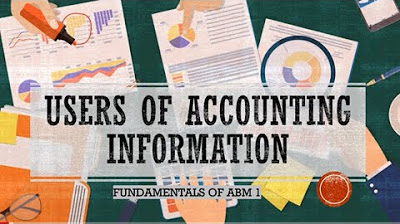Module 1 : Introduction to Accounting Part 2
Summary
TLDRThis session introduces the users of accounting information, distinguishing between internal (owners, managers) and external users (investors, lenders, suppliers, customers, government, public, employees). It explores different business forms: single proprietorship, where the owner is personally liable; partnership, with shared liability; and corporations, which offer limited liability and transferable ownership, making them suitable for large-scale capital raising. The session highlights the importance of accounting in decision-making and financial health across various stakeholders.
Takeaways
- 📚 Accounting information is crucial for both internal and external users.
- 🏢 Internal users, such as owners and managers, rely on accounting data for decision-making and business management.
- 💼 Managers use accounting disclosures to understand business performance and strategize for future profitability.
- 🏦 External users include investors, lenders, suppliers, customers, government agencies, the public, and employees, each with specific interests in the financial health of a business.
- 💹 Investors assess the risk and potential return on their capital through financial statements.
- 🏢 Lenders evaluate the creditworthiness of a company to ensure timely repayment of loans.
- 🔄 Suppliers use financial information to determine the reliability of a company to honor credit transactions.
- 🛒 Customers, including producers and consumers, depend on the continuous availability and quality of products.
- 🏛 Government agencies use financial data for regulatory purposes, including taxation and resource allocation.
- 🌐 The public views financial information as a report card on employment opportunities and economic growth.
- 👨💼 Employees are interested in the stability and growth of the company for job security and advancement.
- 🏬 Business organizations can be single proprietorships, partnerships, or corporations, each with distinct legal and accounting implications.
- 🧑💼 In a single proprietorship, the owner is personally liable for all business debts and the business is not a separate legal entity.
- 🤝 Partnerships are owned by two or more persons who share liability for the business's debts.
- 🏢 Corporations are separate legal entities with limited liability for shareholders, making them suitable for large-scale capital raising.
Q & A
What are the two sets of people who need accounting information?
-Accounting information is needed by internal users and external users.
Who are considered internal users of accounting information?
-Internal users are those associated with the management of the business for which the information is gathered, such as directors, partners, managers, and officers.
How are internal users further divided in the context of accounting?
-Internal users are further divided into owners and managers. Owners provide money to the business and are interested in its profitability and financial soundness, while managers use accounting disclosures to understand what has happened and to plan for future profitability.
What is the role of accounting information for external users?
-External users, which include investors, lenders, suppliers, customers, government agencies, the public, and employees, rely on accounting information to make decisions, assess risks, and evaluate the credibility and financial health of a business.
Why is financial information important for investors?
-Financial information is crucial for investors to decide about making investments, the amount of investment, and whether to hold or sell their equities.
What assurance does accounting information provide to lenders?
-Accounting information provides lenders with reasonable assurance about the payment of interest and the repayment of the principal.
How does accounting information affect suppliers' decisions?
-Suppliers use financial information to decide about the credibility of a firm and whether they should continue supplying on credit.
What are the different forms of business organizations mentioned in the script?
-The different forms of business organizations mentioned are single proprietorship, partnership, and corporation.
What is a single proprietorship and how is it viewed from an accounting perspective?
-A single proprietorship is a business owned by one person who is often also the manager. From an accounting perspective, it is regarded as a business entity separate from the owner's other affairs.
How is a partnership different from a single proprietorship in terms of ownership and liability?
-A partnership is owned by two or more persons and is not legally a separate entity from its owners or partners, meaning the partners are personally liable for the debts of the partnership. However, from an accounting viewpoint, it is a business entity separate from the personal activities of the partners.
What are the key features of a corporation that make it distinct from other business forms?
-A corporation is a legal entity separate from its owners, with an existence distinct from that of its shareholders. It can own assets, is responsible for its debts, and offers limited personal liability to its shareholders, making it an ideal vehicle for raising capital from many individual owners.
Outlines

このセクションは有料ユーザー限定です。 アクセスするには、アップグレードをお願いします。
今すぐアップグレードMindmap

このセクションは有料ユーザー限定です。 アクセスするには、アップグレードをお願いします。
今すぐアップグレードKeywords

このセクションは有料ユーザー限定です。 アクセスするには、アップグレードをお願いします。
今すぐアップグレードHighlights

このセクションは有料ユーザー限定です。 アクセスするには、アップグレードをお願いします。
今すぐアップグレードTranscripts

このセクションは有料ユーザー限定です。 アクセスするには、アップグレードをお願いします。
今すぐアップグレード関連動画をさらに表示

Lesson 005 - Users of Accounting Information

FABM1 Week 1 Grade 11 Definition, Nature, History and Users of Accounting information

📚 Introdução à Contabilidade | Conceito, objeto, campo de aplicação, finalidade e usuários.

What is Accounting?

FABM1: Users of Accounting Information INTERNAL & EXTERNAL. BAKIT BA NILA KAILANGAN ANG FS??

AKM Awal 5
5.0 / 5 (0 votes)
